Hazel; Hazelnuts, Filberts, & Cobnuts.

Hazels belong to the genus - Corylus, which in turn belongs to the Betulaceae [the birch family]. There are a number of different species within the genus Corylus and a variety of cultivars. The common or European Hazel is named C.avellana; after the Italian town of Avella. In the past, the hazel was much grown for coppice, indeed in 1905 it is thought that there were some half a million acres of hazel coppice (Mabberley's Plant Book, 3rd Edition 2008). Its wood / poles was used in the making of hurdles, legume poles, wattle and daub. Hazel was also much favoured as a rod for water divining.
The hazel was also a source of hazelnuts - the fruit of the tree. The flowers are produced early in the year in the form of long catkins - the male flowers (see image below). The female flowers are small, red, ‘bud-like’ structures (image below). The redness being largely due to the protruding styles (which receive the pollen). Pollination is anemophilous - i.e. by the wind.
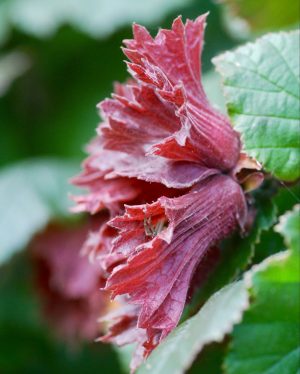 The resulting fruit is a nut, these appear in small clusters (1 -5). Each nut is surrounded by a short leafy husk - an involucre. This leafy husk encloses most of the nut. The ripe nut falls out of the involucre / husk some 7–8 months after pollination has occurred. It can be distinguished from the closely related filbert (Corylus maxima) by the size of the involucre (see image below). In the filbert, the nut is fully enveloped by the involucre , i.e it is longer than the nut. The name filbert might derive from Philibert of Jumièges or possibly a corruption of vollbart (= beard, referring to the husk or involucre around the nut).
The resulting fruit is a nut, these appear in small clusters (1 -5). Each nut is surrounded by a short leafy husk - an involucre. This leafy husk encloses most of the nut. The ripe nut falls out of the involucre / husk some 7–8 months after pollination has occurred. It can be distinguished from the closely related filbert (Corylus maxima) by the size of the involucre (see image below). In the filbert, the nut is fully enveloped by the involucre , i.e it is longer than the nut. The name filbert might derive from Philibert of Jumièges or possibly a corruption of vollbart (= beard, referring to the husk or involucre around the nut).
Cobnuts are hazelnuts that are cultivated specifically for consumption; they are sold fresh rather than in dried form. Cobnuts are usually bigger than wild hazelnuts.
Hazel nut consumption dates back many thousands of years. There is evidence of large-scale nut processing in mesolithic times. Hazel shells , some 8,000 years old, have been identified in a midden pit on the island of Colonsay in Scotland. All hazel nuts are a good source of protein, dietary fibre, vitamin E, iron, thiamin, phosphorus, manganese, and magnesium. Nowadays, they are much used in the making of confectionery items such as truffles and pralines. Indeed, much of worlds’ total production of the nuts is used by Ferrero SpA, the maker of Nutella and Ferrero Rocher. Much of the cultivation of hazel nuts takes place in Turkey.
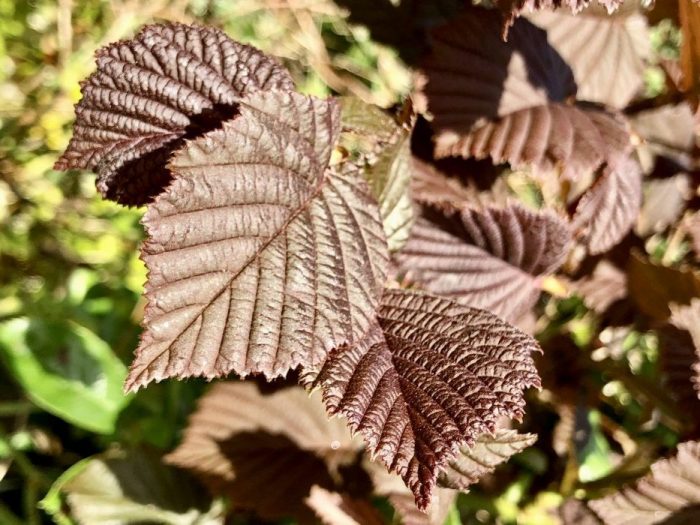
filbert leaf
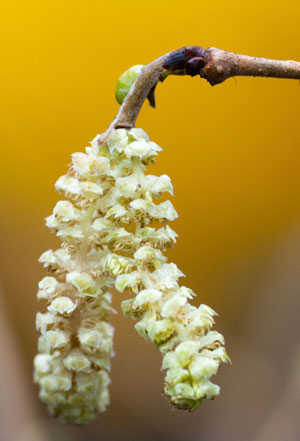
Male catkins
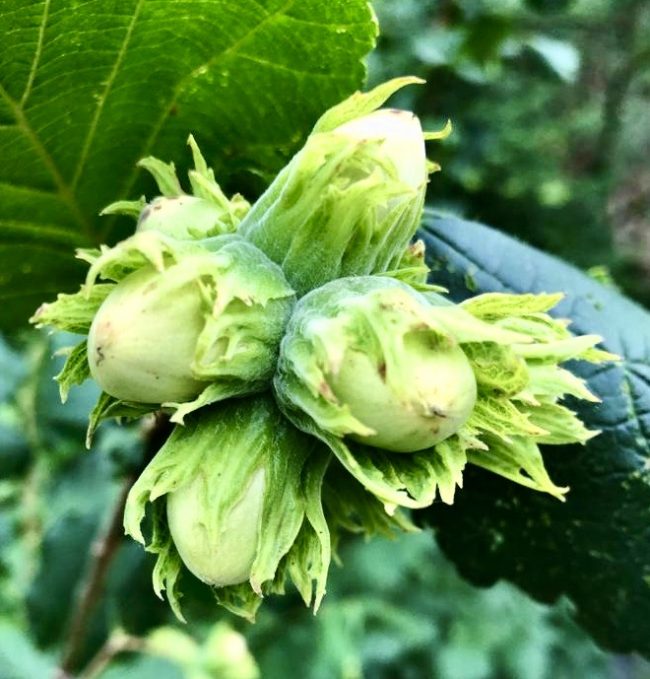
Cluster of hazel nuts
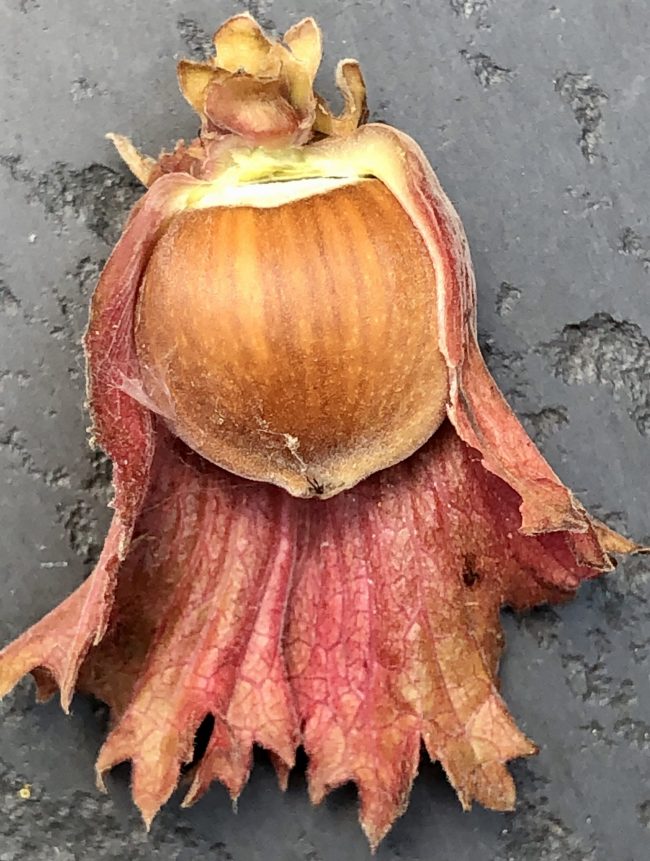
Filbert with part of husk / involucre removed
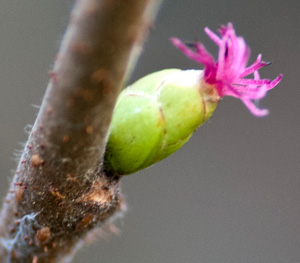
female flower with style / stigma protruding
Comments are closed for this post.
